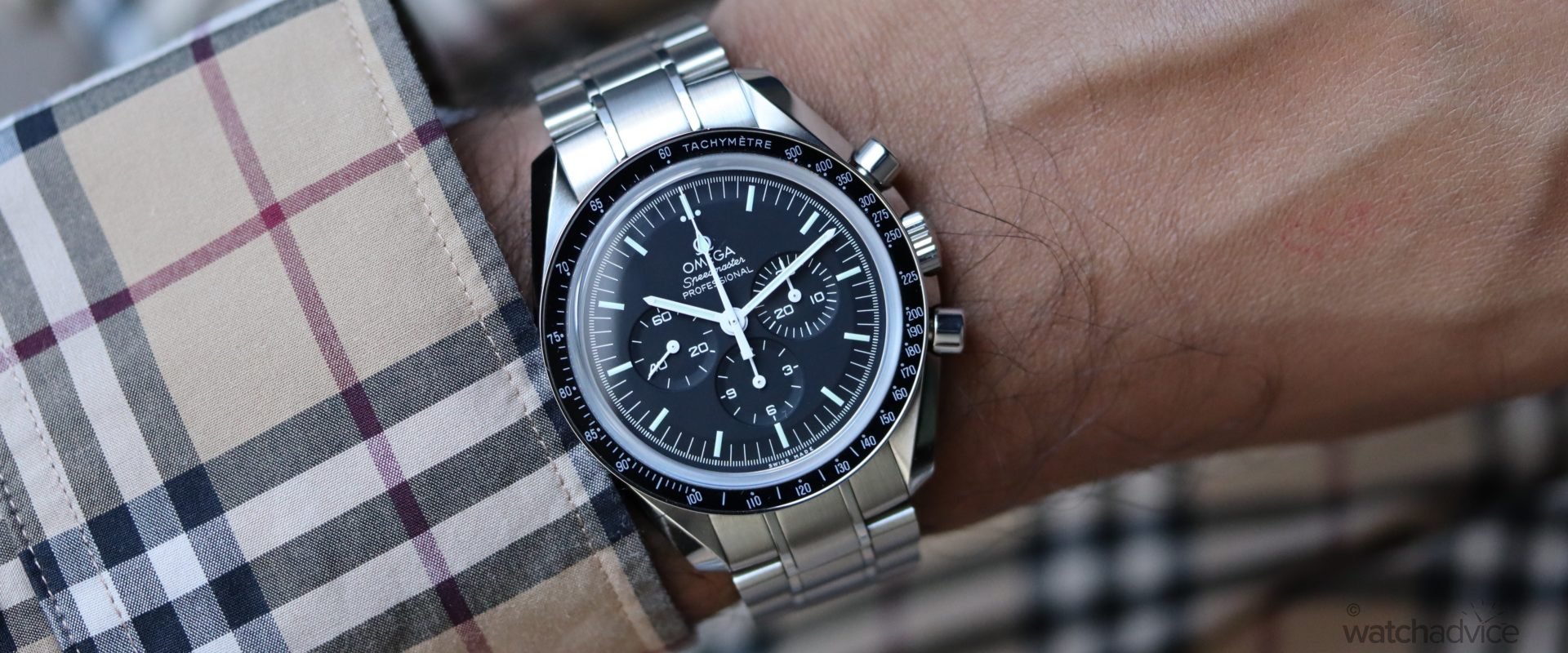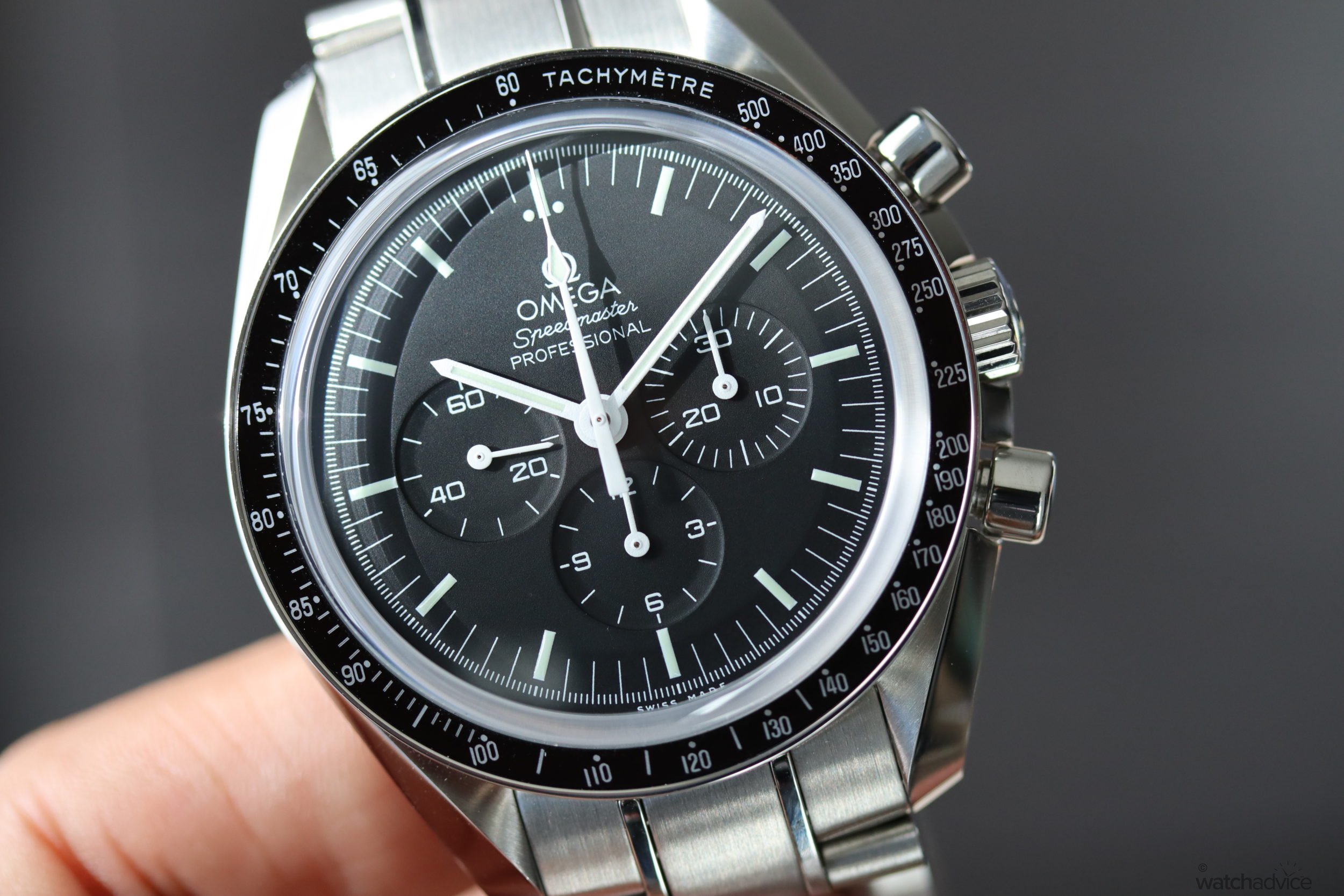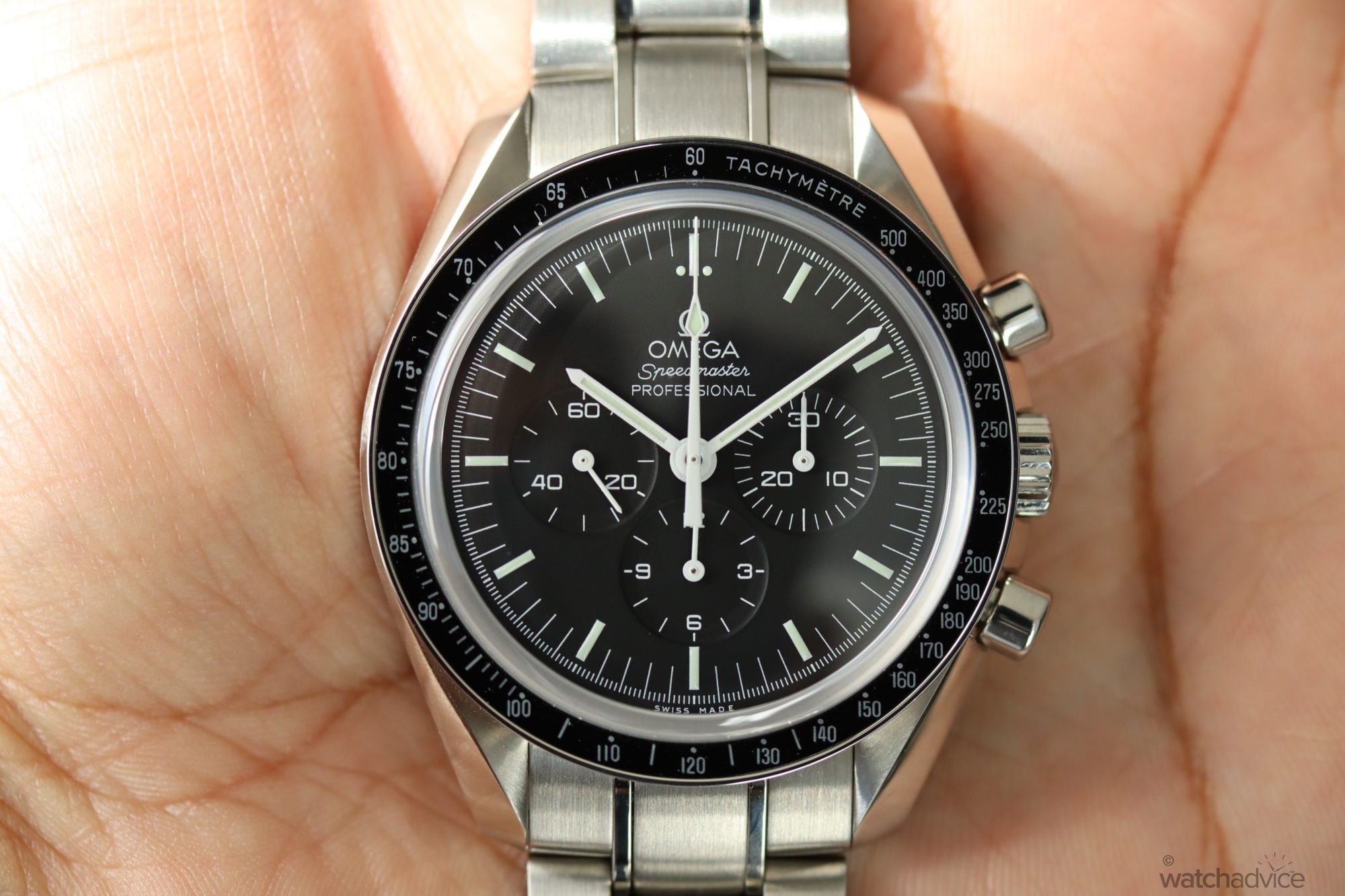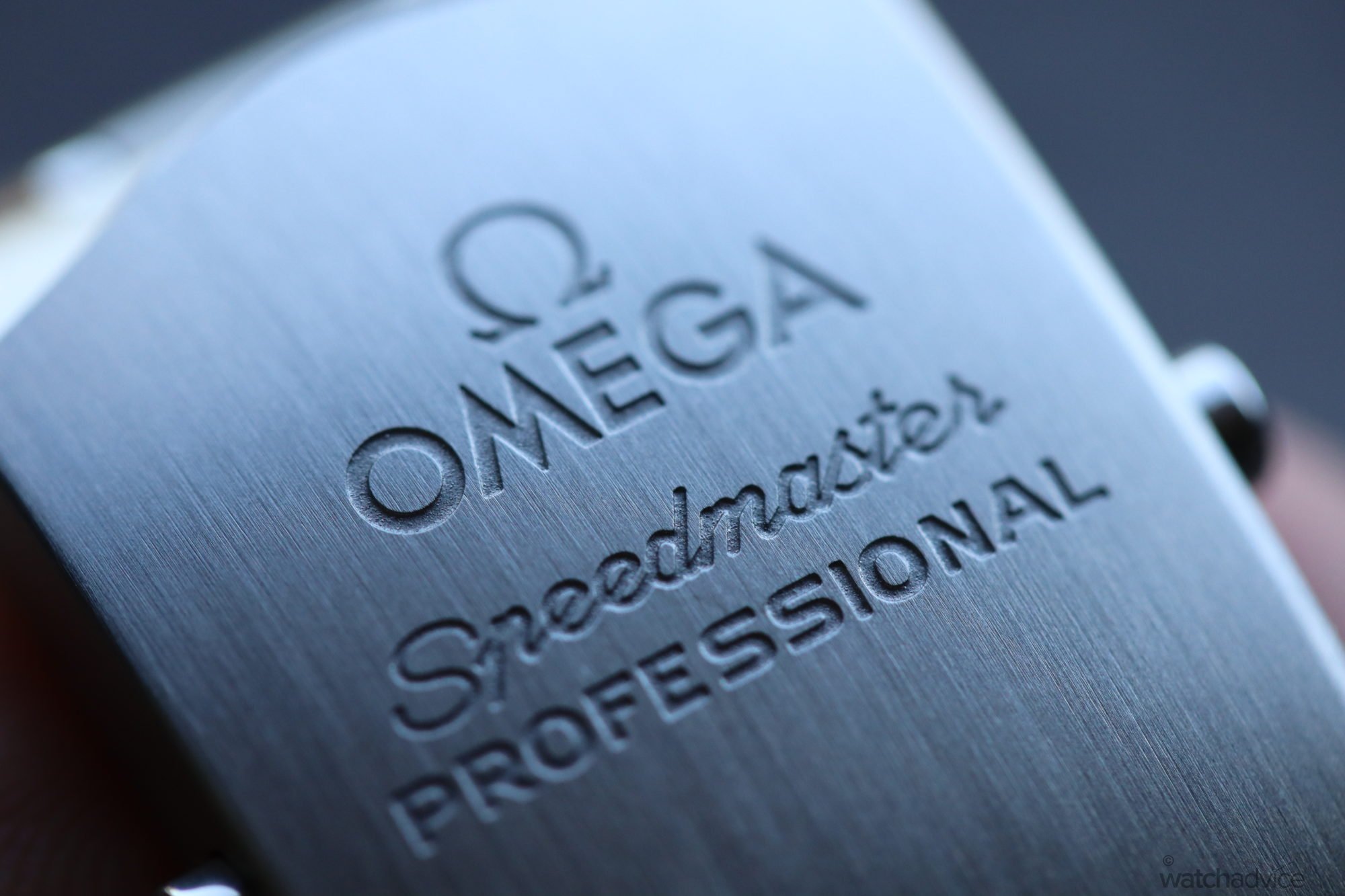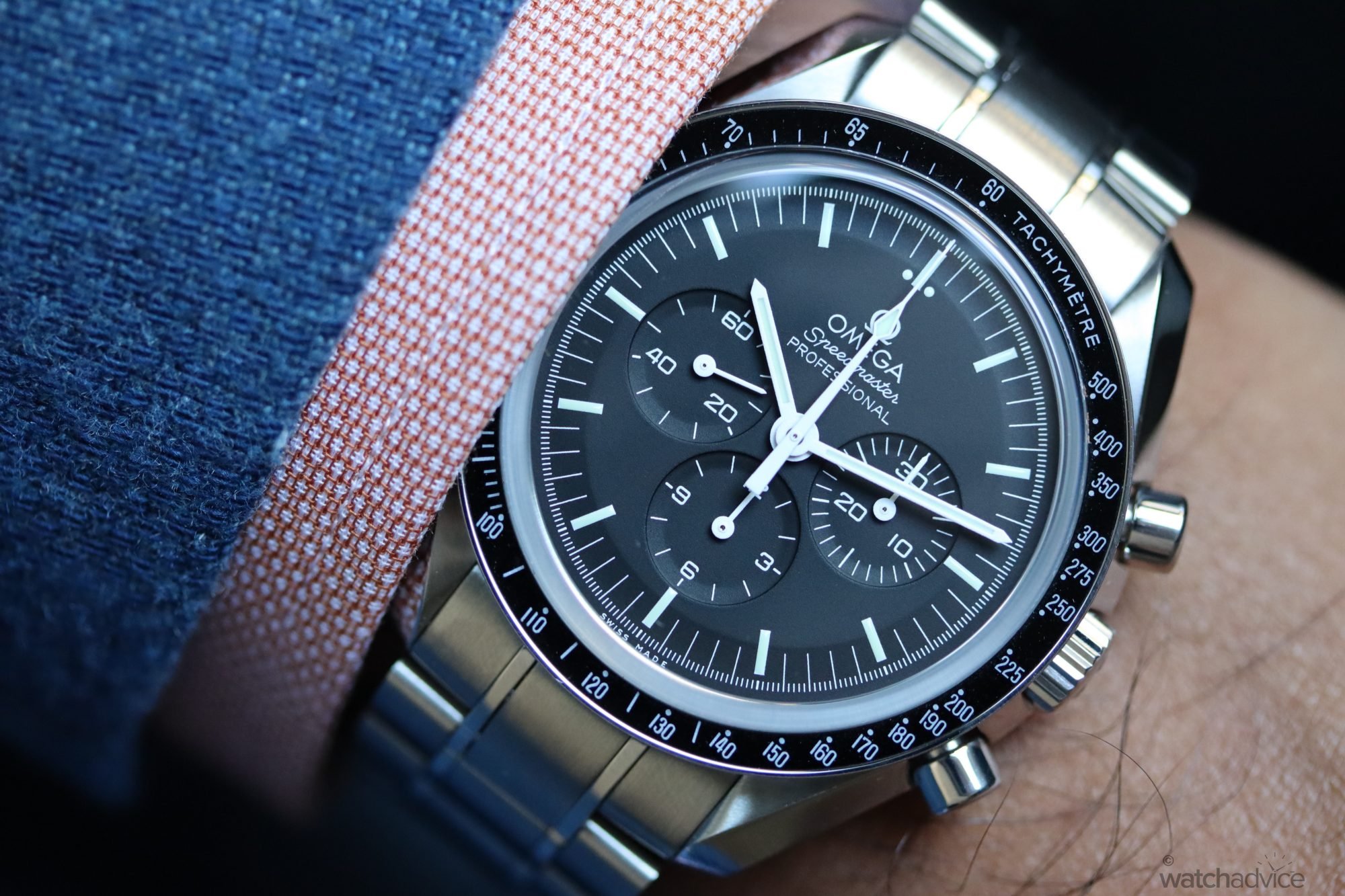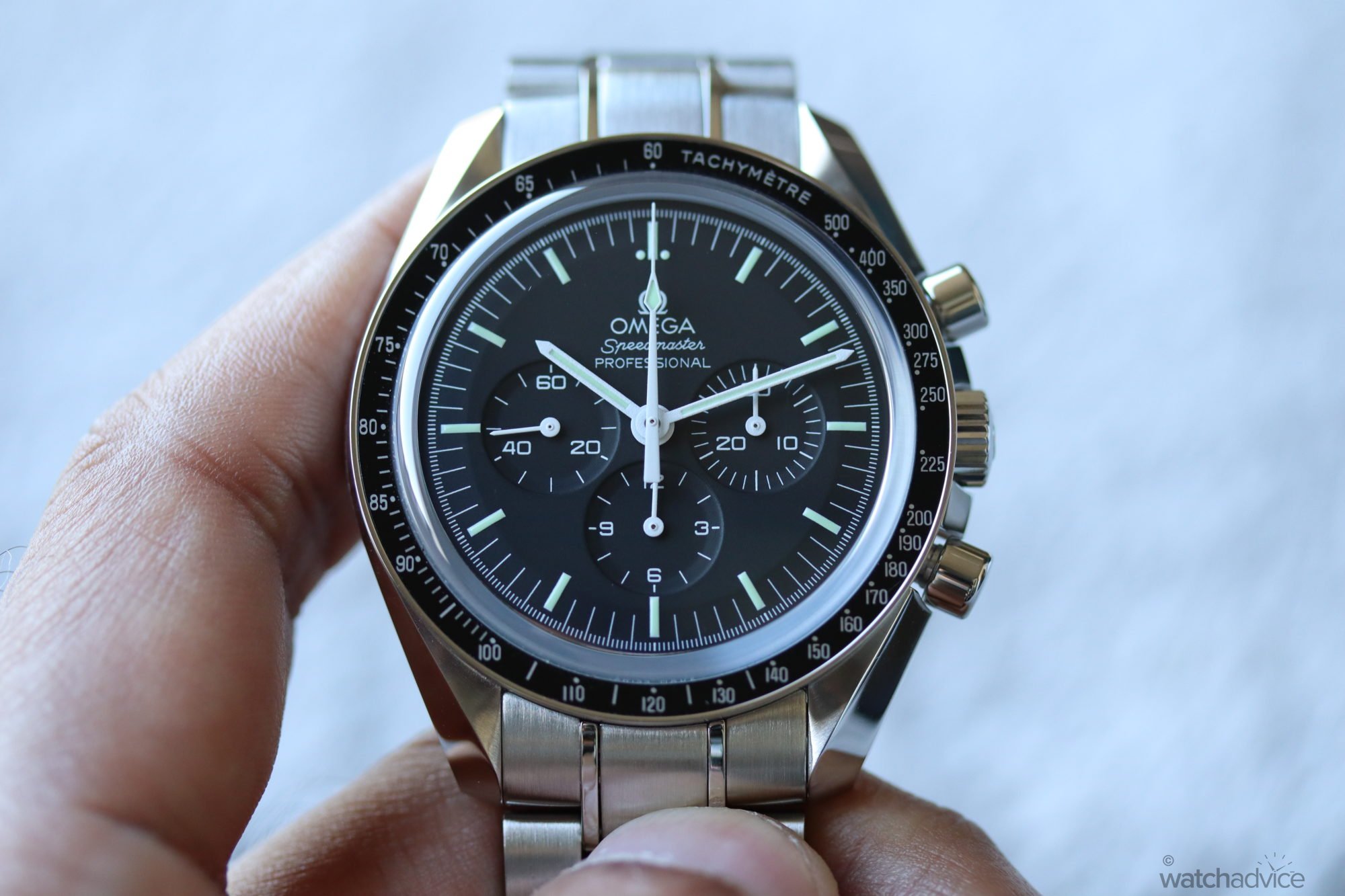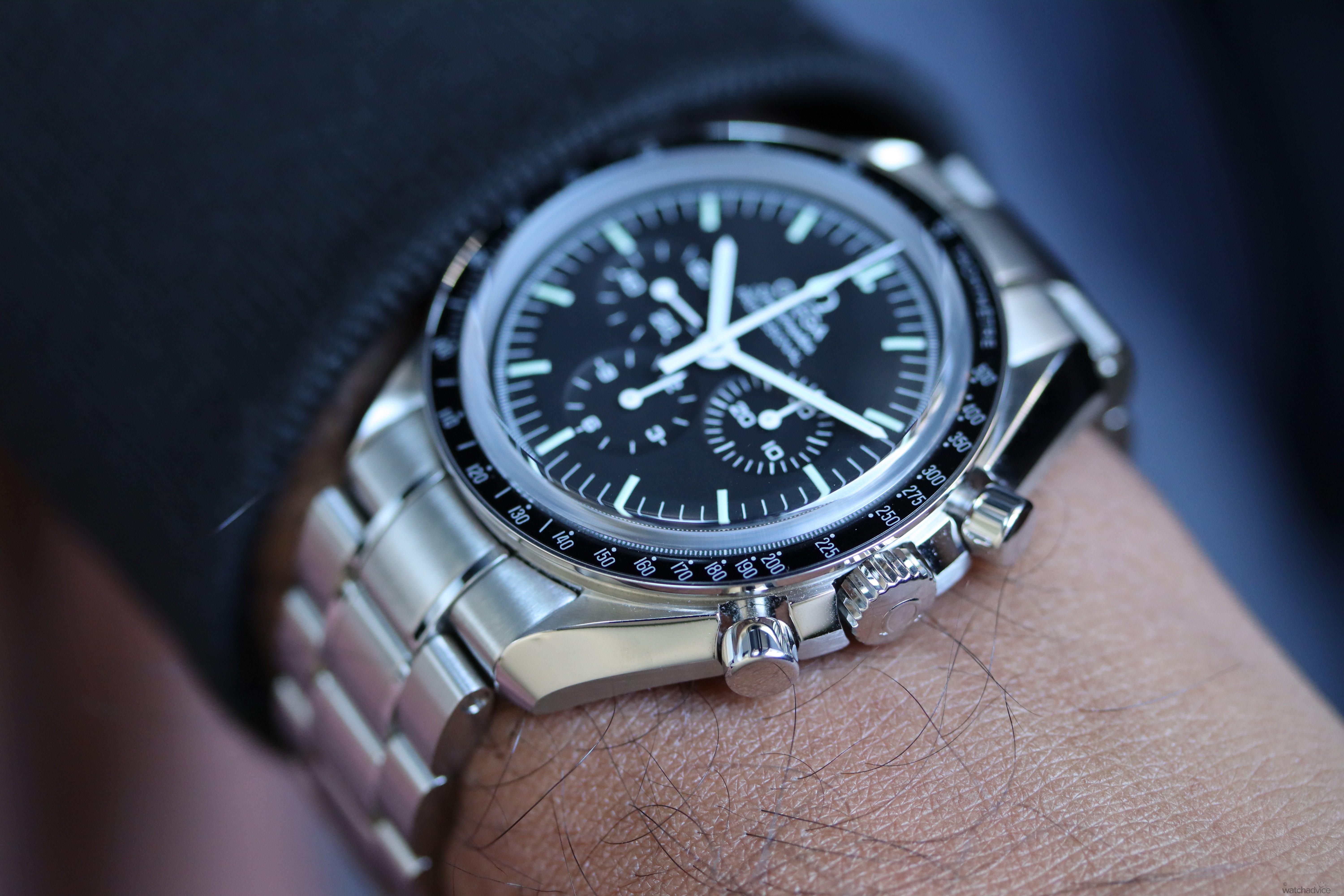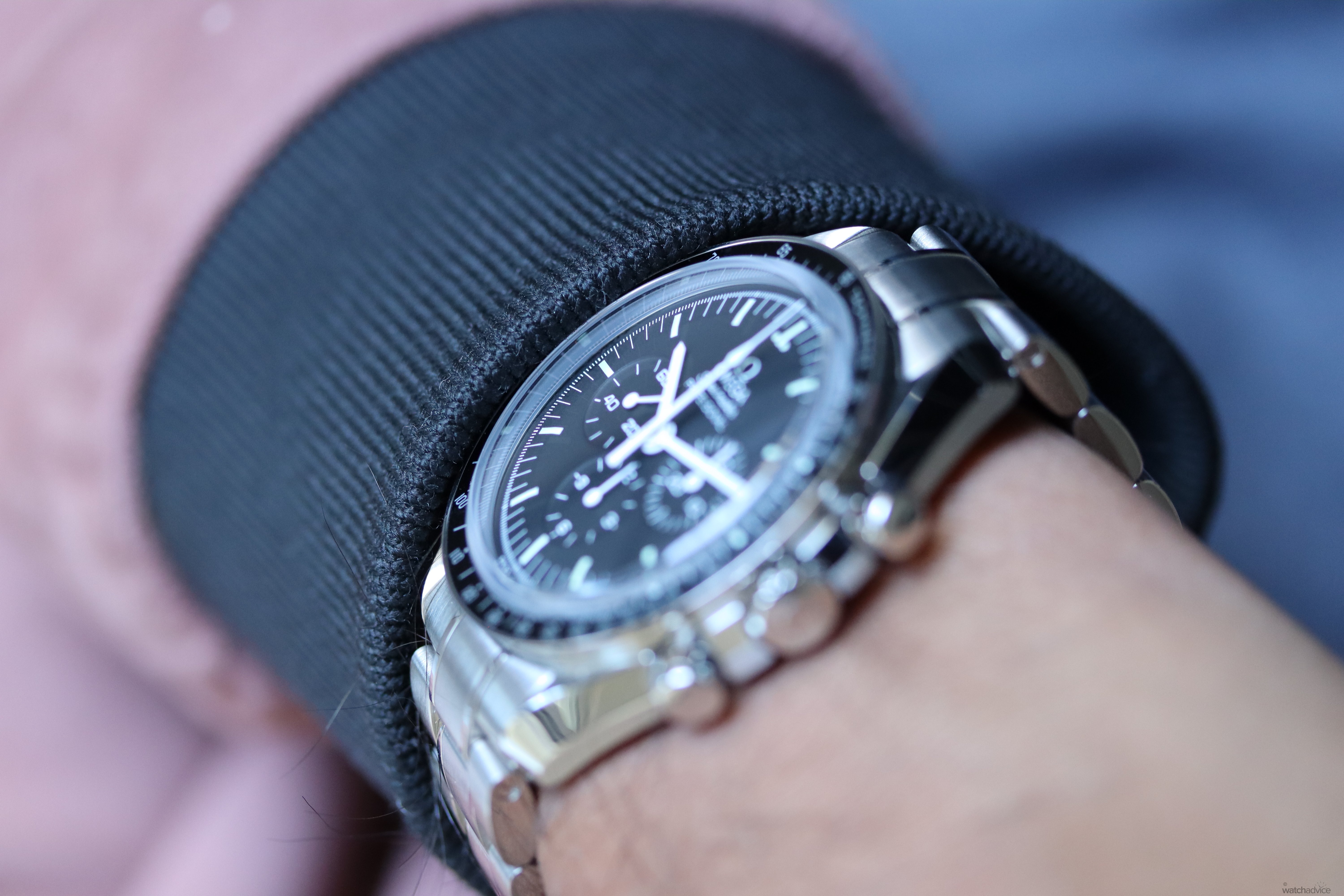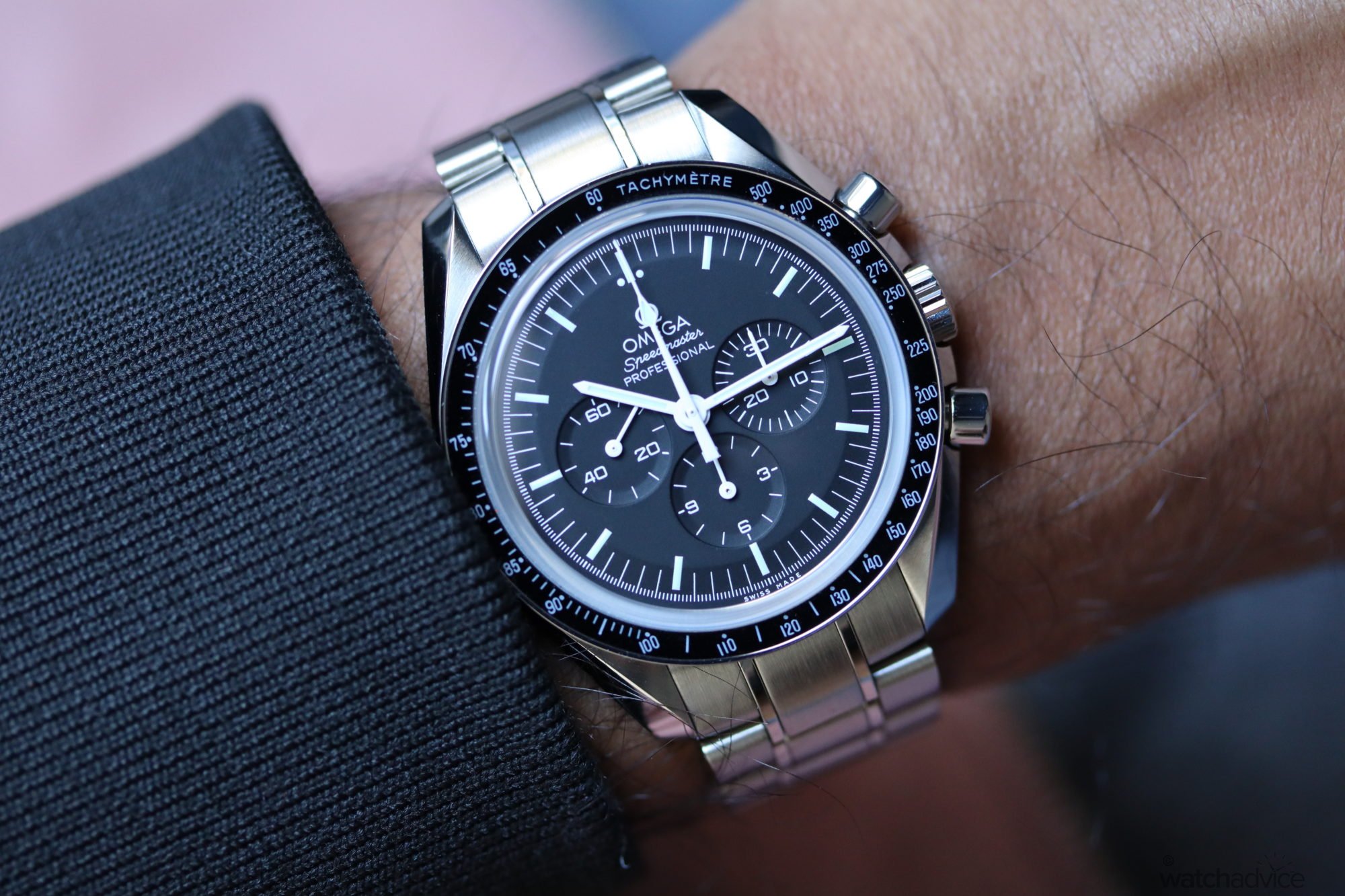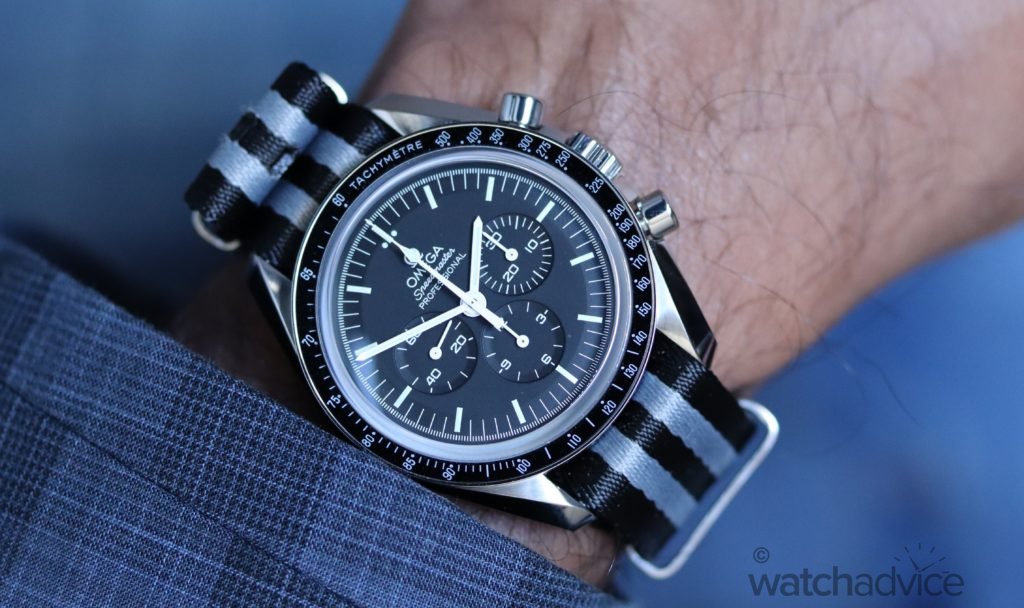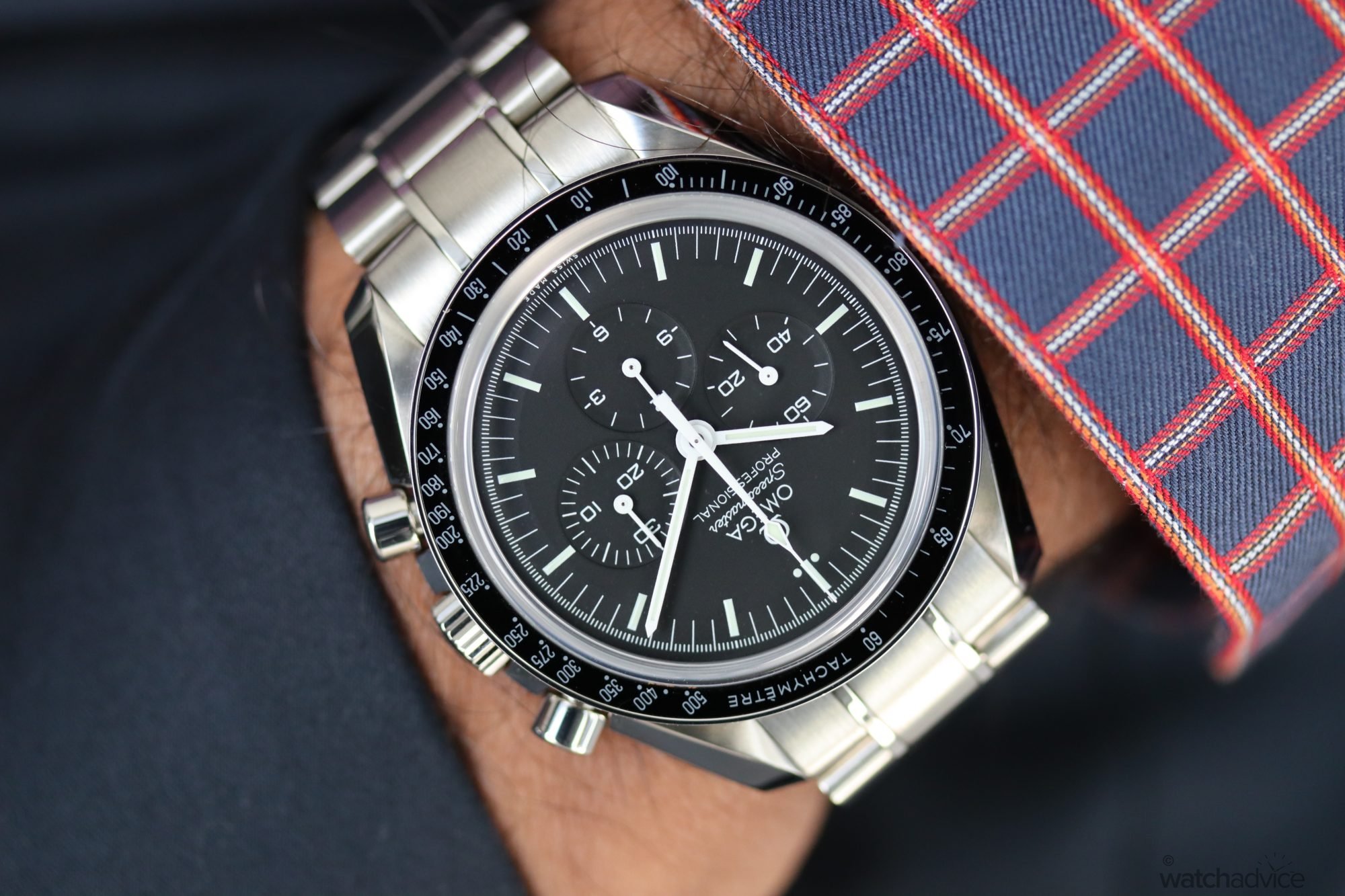With the launch of the latest white dial Speedmaster around the corner, we’ve dug into our archives to bring back our review of the Omega Speedmaster Moonwatch. Almost 5 years on, it still stands up well!
Back in 2019, we reviewed the then-current Omega Speedmaster Professional Moonwatch. Since then, Omega has given the Speedy a bit of an upgrade with a new movement and a re-designed bracelet and clasp. However, not much else has changed, and with the imminent announcement of Omega’s new suspected White Dial or perhaps a white ceramic Speedmaster on Tuesday 5th March 2024, we thought we would dig into our archives and re-visit this review, and add a few comments within to be in line with the current model. Enjoy this blast from the past!
A Bit Of History
The Omega Speedmaster is one of Omega’s most iconic watches to date. It has a rich history with roots tied to space travel. Not many people may be aware but the speedmaster models that we have come to admire in this day and age weren’t originally thought of as a watch for space travel. When it was first released in 1957, it was portrayed as a sports and racing chronograph watch as Omega was the official timekeeper of the Olympic games.
Things changed, however, when NASA decided that it wanted to use the Omega Speedmaster for its manned missions into space, while also being included in the Apollo program. So how exactly did Omega’s Speedmaster go from being a watch used for timing sporting events to being the watch Astronauts used for space travel? It all starts with a story about a man named Walter Schirra.
Being an aviator and military pilot himself, he was about to embark on the Mercury-Atlas 8 Mission. As a way to possibly mark the momentous occasion, he went watch hunting (as any of us would without a doubt). Omega had established a position for itself and with the release of the eye-catching Speedmaster Chronograph, it would be safe to say that it more than caught Schirra’s attention. This would be the turning point in Speedmaster’s history as from this point forward, it would go on to do numerous space travel missions.
The “Professional” name was added to the Speedmaster during the 1964-1965 period. The Speedmaster would further cement its legacy as NASA’s go-to watch for space missions due to the events that occurred on Apollo 13. During the Apollo 13 mission, there was an explosion and rupture in one of the oxygen tanks, causing a major internal failure on the spacecraft. Not only the source of Oxygen was diminishing really quickly for the crew, but the navigational and directional equipment was malfunctioning as well. To get the Astronauts safely back to earth, they needed to be able to fire the engines at the right time, so that they could enter the Earth’s atmosphere at precisely the right angle. With the computer and certain technological systems failing, the Omega Speedmaster would come to the rescue.
The crew had to time the firing of the engines correctly and precise activation of the burners was required, which lasted a total of 4 minutes and 24 seconds. Following this they had to make further two small mid-course corrections. To perform one of the smaller mid-course corrections before entering the earth’s atmosphere, the Speedmaster was used which lasted a total of 14 seconds. The dire consequences of firing the burners at the wrong time and the wrong angle would’ve been the difference between death or permanent orbit around the sun for the crew. A Silver Snoopy award which is an accolade given to people for making a major difference on Space missions, was given to the creators of the Speedmaster watch, Omega. Hence the Silver Snoopy award special edition Omega Speedmasters we have today.
The Design
The design of the watch is just as iconic as the watch itself. With the dial relatively unchanged over the course of its lifespan so far, it’s still strikingly beautiful. In the current Speedmaster Moonwatch professional, it carries the standard tachymeter. There is a 30-minute counter on the 3 o’clock position, a 12-hour counter at the 6 o’clock, and a constant seconds counter on the 9 o’clock position. The dial has a distinctive black-and-white contrast that is symbolic of the Omega Speedmaster models. The dial itself is black while the indexes, hour, minute, second hands, and hour markers are coloured in white. The three counters are also done in white colour. This is vitally important for easy readability and would’ve definitely come in handy during the space missions.
The heart of the Speedmaster Moonwatch Professional is run by the mechanical Calibre 1863. 2024 edit: However, I must note that the current version in 2024 now has the 3861 Calibre which is an evolution of the Calibre 1863. Most notably an increased power reserve, hacking seconds, and increased anti-magnetism with a slightly better level of finishing all add up to a better overall movement in the latest version. This is an upgrade to what was an upgrade on the Calibre 1861 before the 1863 was implemented.
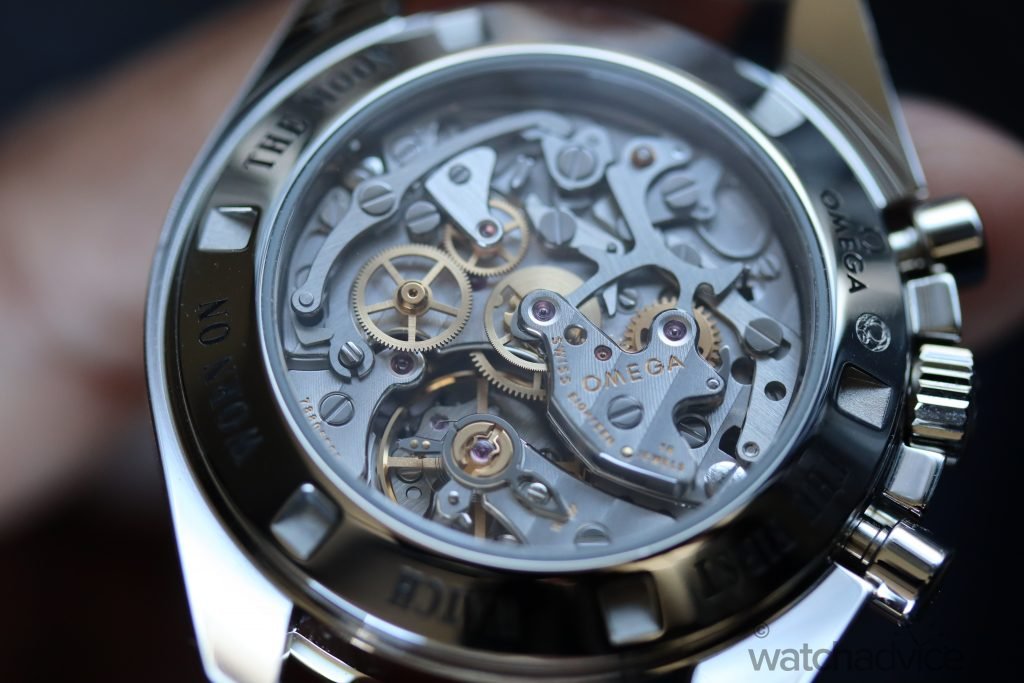
The calibre 1863 uses more high-grade components and comes with a rhodium-plated finish and an open case-back to be able to admire the movement in action. The calibre 1863 is a hand wound chronograph movement which means that there is no rotor in action. With the removal of the rotor, it makes way for the beautiful open work dial to be viewed at full capacity and truly appreciated. Omega have gone the extra length to make sure the movement looks aesthetically pleasing.
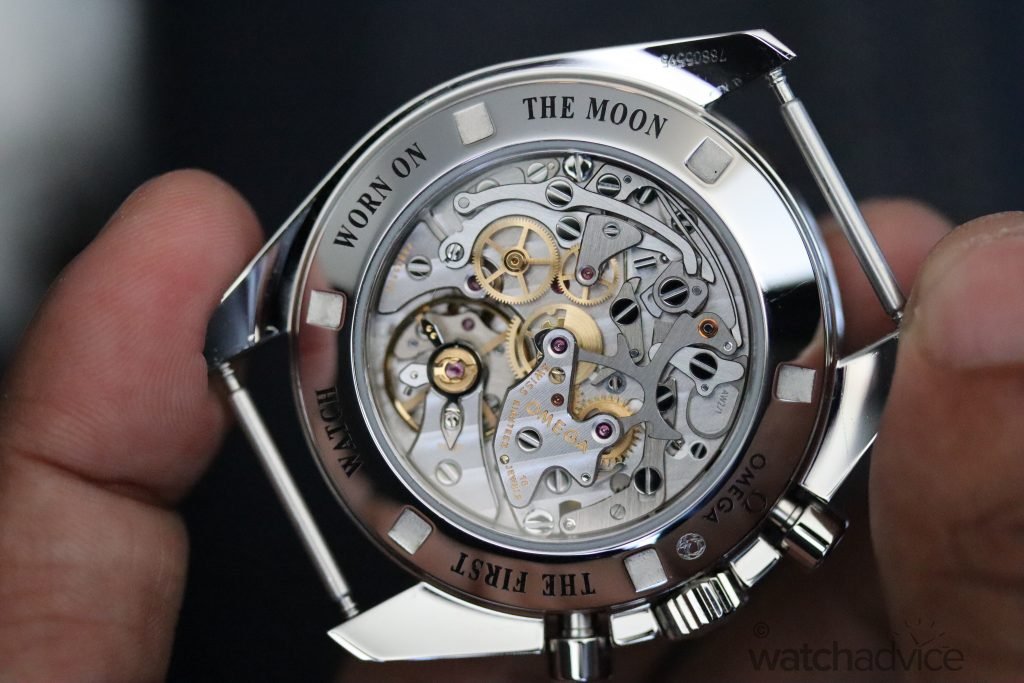
The bridges have a clean brushed finish in one direction, while the edges are also rounded off nicely. For a watch that is priced under $12,000 AUD, the intricate work of the movement is incredibly well done by Omega and is worth every penny. The calibre 1863 movement offers up to 48 hours of power reserve (the newer 3861 gives you 50 hours) while also having 50 metres of water resistance.
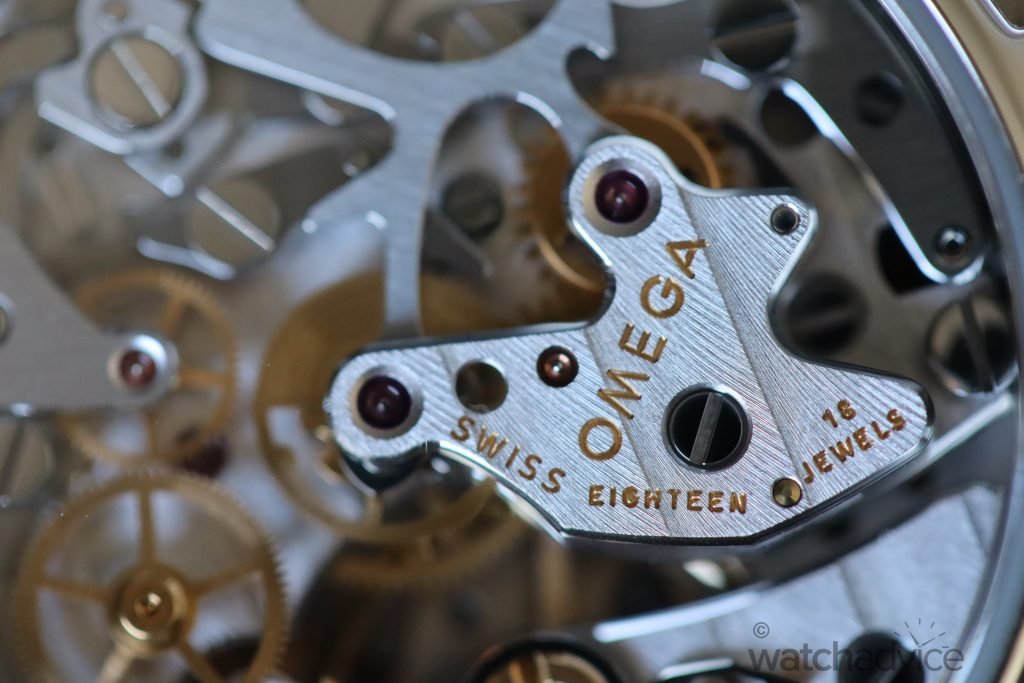
How It Wears?
With a 42mm casing, the Omega Speedmaster Moonwatch Professional wears nicely on a 7-inch wrist without the lugs protruding out. When worn with a steel bracelet the watch feels very solid on the wrist. The Omega Speedmaster Moonwatch Professional sits at approximately 14mm in height, which means that while it does stand quite tall it doesn’t get in the way of everyday wear. This is certainly a watch that looks good regardless of the strap it’s matched with.
Omega does offer their own Nato straps for this watch, citing that astronauts used these Nato straps for their space missions due to much less chance of the watch decoupling from the bracelet. What this means for wearability in the modern day is that it is almost suited to any occasion. You can wear this watch to outdoor occasions with the fun vibrant summer colours of the Nato straps or even to less formal occasions and everyday wear when worn with a black leather strap.
The steel bracelet option offers a use-case for those formal occasions where a suit is required or if you would rather prefer to have the watch feeling slightly heavier on the wrist. 2024 edit: When Omega updated this a few years back, the Speedmaster bracelet was given an overhaul and now comes with a more refined bracelet with evenly-spaced links, a more refined and smaller clasp with a comfort extension, similar to what you find on the Seamaster. This gives the piece a slightly dressier look and wears even better on the wrist than the bracelet of old!
Some Final Thoughts – Old vs New
Looking back on this review, it’s amazing how very little has changed over the past 4 or 5 years with this piece. It’s still as good-looking today as it was in 2019, albeit with a few minor differences. Since then, keen observers will not that the bracelet has changed on the Monwatch to the newer and lighter bracelet. This gives the watch a somewhat slightly different look with a more refined link system and also the addition of the new clasp with a comfort setting. A welcome addition for most.
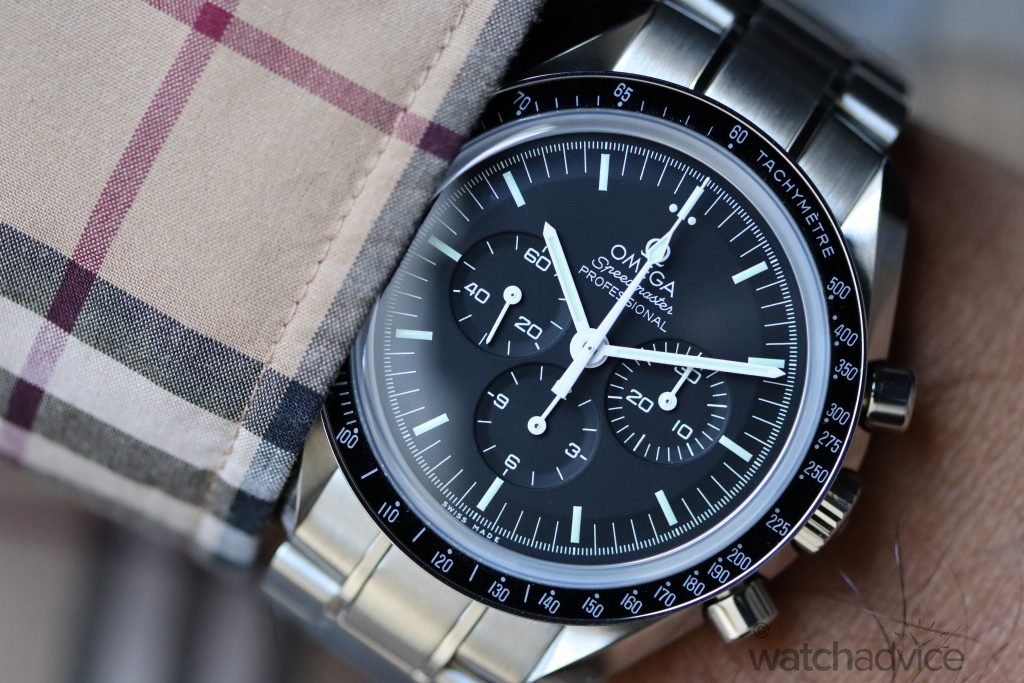
The newer movement in the form of the Calibre 3861 isn’t a leap ahead, but more an evolution to stay current with the rest of the Omega lineup. More power reserve, hacking seconds and a better overall finish is always welcomed and doesn’t depart too much from the 1863 in the previous model. It’s still a reliable workhorse movement that is a Master Chronometer certified and highly anti-magnetic. Again, all good things. And whilst these improvements are great, the Speedmaster is still a classic watch that is recognisable anywhere and from any era. A classic will always be a classic!
Reference: 311.30.42.30.01.006, Steel on Steel (As Reviewed). Updated to 1.310.30.42.50.01.001 (Current model)
Specifications
- Case diameter: 42mm
- Case material: Steel case, brushed and polished
- Dial Colour: Matte Black
- Bezel: Black, with a tachymetric scale
- Crystal: Domed, scratch-resistant sapphire crystal with anti-reflective treatment inside
- Water resistance: 50 meters/ 5ATM
- Movement: Omega 1863, manual-winding chronograph movement. Updated in the current model to Calibre 3861, beating at 3Hz and Master Chronometer cdertified.
- Power reserve: 48 hours (Calibre 1863), now 50 hours (Calibre 3861)
- Bracelet: Steel bracelet with brushed and polished links with pushbutton folding clasp. (Current version on newer style with comfort extension in clasp)


